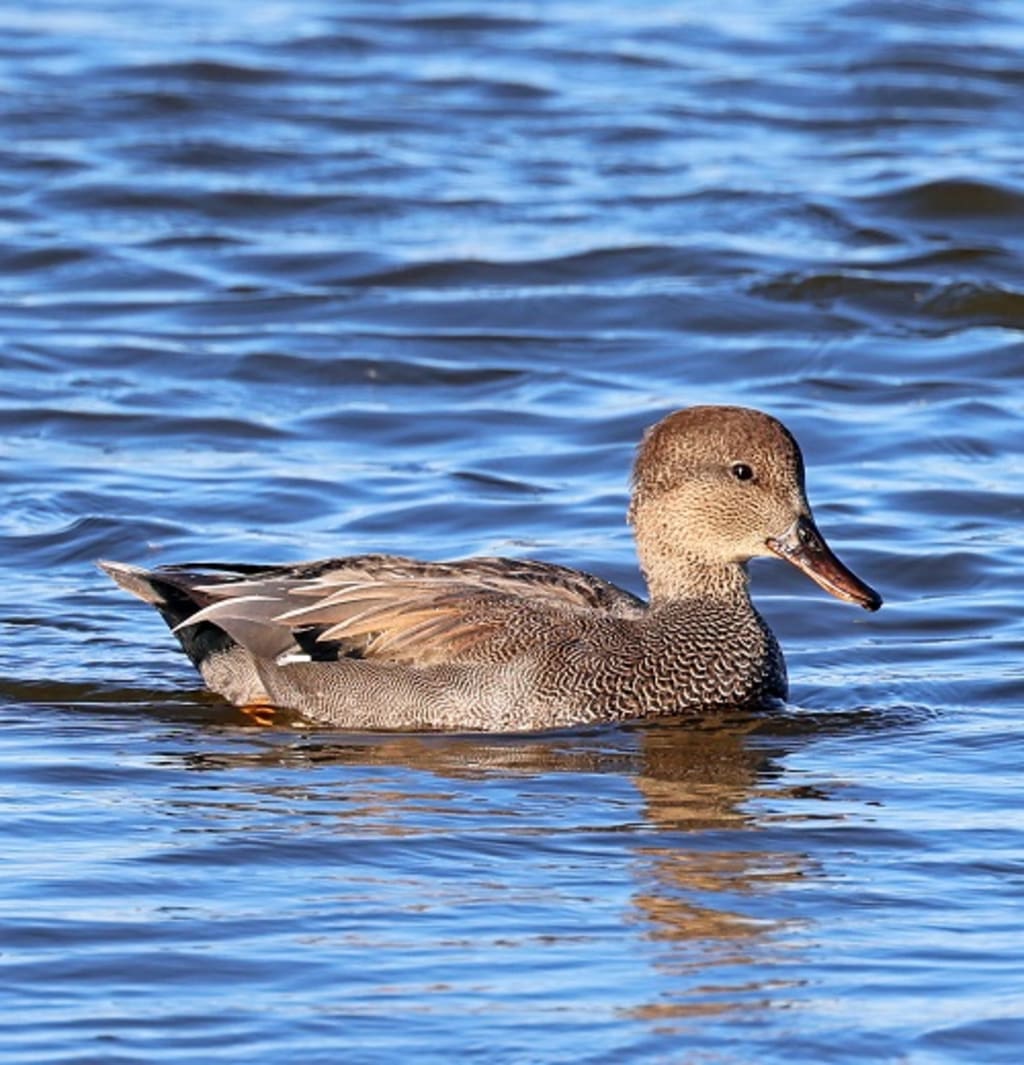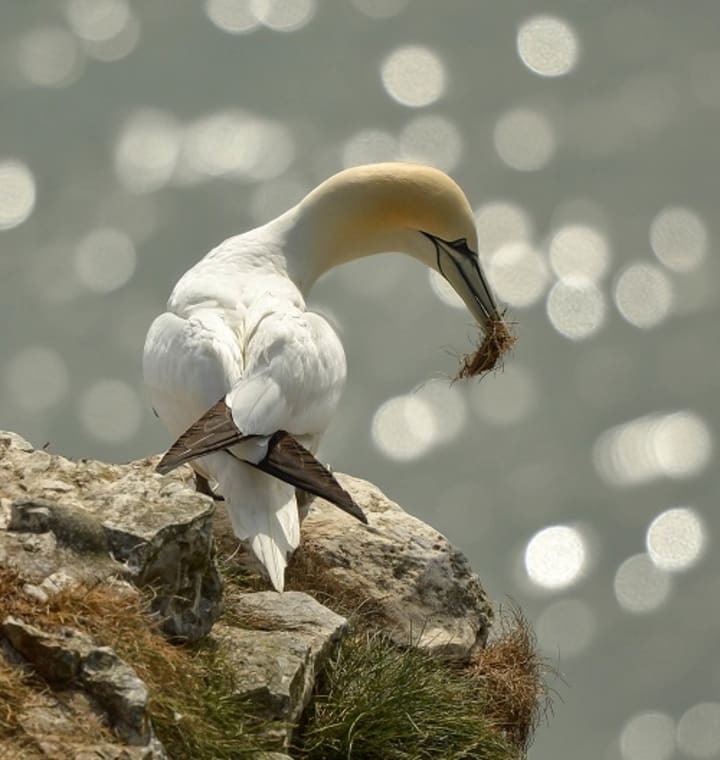40 Awesome Birds That Start With G
Birds That Start With G

While bird enthusiasts usually focus on species, families, or habitats, it's also fun to explore avian life alphabetically. If you're specifically curious about Birds That Start With G, this guide will provide fascinating insights.
1. Gadwall
The Gadwall: Nature's Muted Masterpiece
The gadwall, scientifically known as Mareca strepera, is a remarkable yet understated member of the waterfowl family that resides in wetlands, marshes, and other watery habitats across North America, Europe, and Asia. This bird may not boast the vibrant plumage of some of its avian counterparts, but it possesses a unique charm and plays a vital role in its ecosystem.
Gadwalls are medium-sized dabbling ducks with subdued, mottled brown plumage that serves as effective camouflage in their marshy homes. While they may not catch the eye with bold colors, their intricate feather patterns are a testament to the beauty that can be found in subtlety.
One of the most distinctive features of the gadwall is its elegant and finely detailed head pattern. Males, in particular, sport a striking black patch on their rump and a subtle white speculum, or wing patch, which is only visible in flight. Their muted appearance allows them to blend seamlessly into their surroundings, providing them with protection from predators.
Gadwalls are primarily herbivorous, feeding on aquatic plants, seeds, and small invertebrates. Their foraging behavior has a beneficial impact on wetland ecosystems, as they help control the growth of aquatic vegetation and disperse seeds, contributing to the overall health of these vital habitats.
During the breeding season, gadwalls construct nests among dense vegetation near water bodies. They typically lay a clutch of 7–10 eggs, and both males and females share in the incubation and care of the young. Their parental cooperation showcases their dedication to the survival of their offspring.
While the gadwall may not steal the spotlight with its appearance, its role in maintaining the balance of wetland ecosystems is invaluable. It serves as a critical indicator species, reflecting the health of the habitats it inhabits. Additionally, these unassuming waterfowl contribute to the beauty and serenity of wetlands with their subtle, graceful presence.
In conclusion, the gadwall is a testament to the beauty that lies in simplicity and functionality within the natural world. Its subdued plumage, intricate patterns, and ecological significance make it a fascinating and important inhabitant of wetlands, deserving of our admiration and conservation efforts.

2. Gannet
The Gannet: Majestic Masters of the Open Ocean
The gannet, known scientifically as Morus, is a stunning seabird that embodies grace, power, and precision in its aerial pursuits. These large, long-winged birds are found along the coasts and islands of the North Atlantic, where they have become renowned for their remarkable diving abilities and their role in marine ecosystems.
Gannets are easily recognizable by their striking appearance. They have sleek white bodies with black wingtips, giving them a distinctive contrast. Their long, slender wingspan allows them to glide effortlessly for hours over the open ocean, covering vast distances in search of prey. These seabirds are highly adapted for life at sea, with webbed feet that aid in swimming and diving.
One of the most impressive aspects of gannet behavior is their diving prowess. When they spot a school of fish from the air, they tuck their wings and fold their bodies into a streamlined shape before plummeting into the water like an arrow. They can dive from heights of up to 130 feet (40 meters) and reach speeds of 60 miles per hour (96 kilometers per hour) as they chase their prey underwater. This incredible hunting technique allows them to catch fish with remarkable efficiency.
Gannets are not solitary hunters; they often engage in group feeding frenzies. These birds coordinate their dives to maximize their success in capturing fish. These group feeding displays are not only impressive to witness but also vital for the health of marine ecosystems, as gannets help control fish populations, ensuring a balanced underwater environment.
Breeding colonies of gannets can be found on coastal cliffs and islands, where they build nests from seaweed and other materials. These colonies can be massive, with thousands of breeding pairs nesting in close proximity. Gannets are known for their strong pair bonds and elaborate courtship displays, which involve intricate aerial maneuvers.
In conclusion, the gannet is a symbol of the power and beauty of the open ocean. Their remarkable diving skills, striking appearance, and role in marine ecosystems make them a captivating and essential species in coastal regions of the North Atlantic. As stewards of the seas, gannets remind us of the incredible diversity and adaptability of life in our planet's oceans, highlighting the need for their conservation and protection.
About the Creator
Enjoyed the story? Support the Creator.
Subscribe for free to receive all their stories in your feed. You could also pledge your support or give them a one-off tip, letting them know you appreciate their work.





Comments
There are no comments for this story
Be the first to respond and start the conversation.